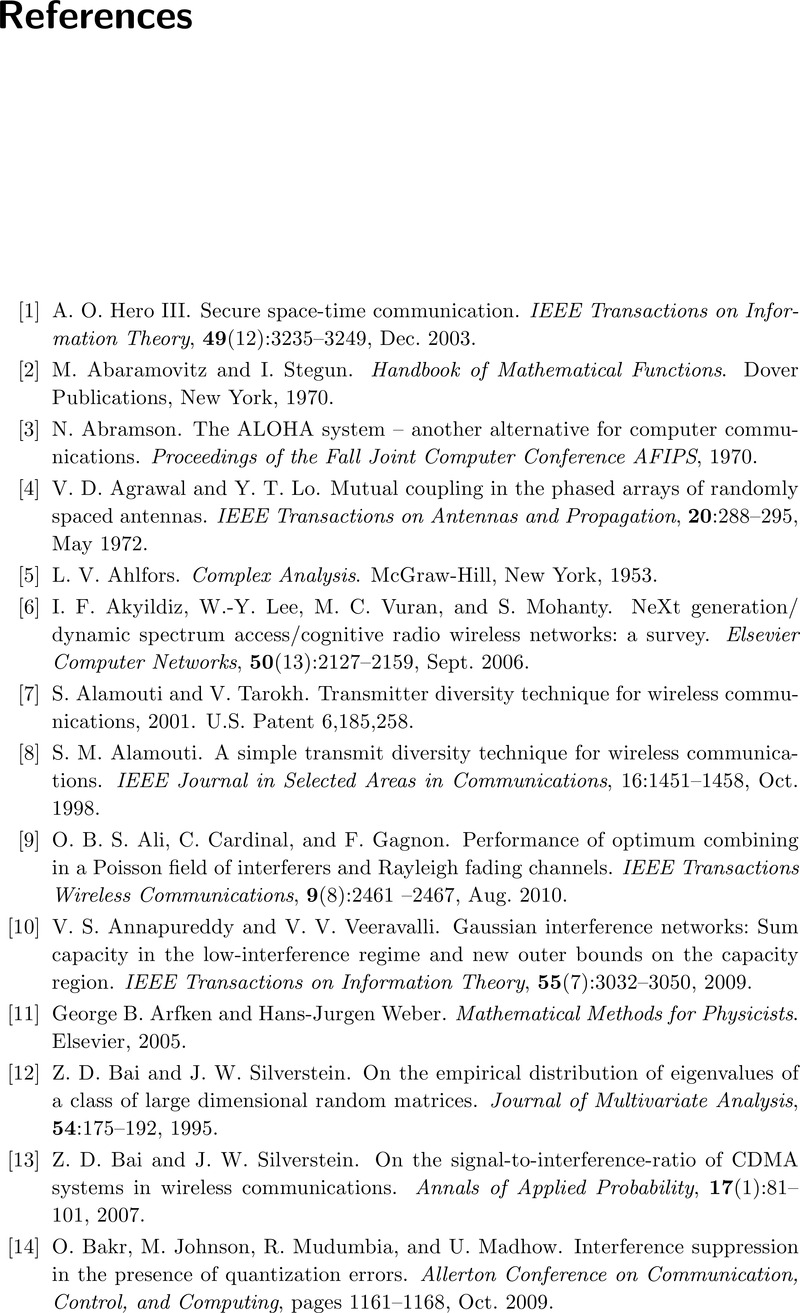Book contents
- Frontmatter
- Contents
- Preface
- Acknowledgments
- 1 History
- 2 Notational and mathematical preliminaries
- 3 Probability and statistics
- 4 Wireless communications fundamentals
- 5 Simple channels
- 6 Antenna arrays
- 7 Angle-of-arrival estimation
- 8 MIMO channel
- 9 Spatially adaptive receivers
- 10 Dispersive and doubly dispersive channels
- 11 Space-time coding
- 12 2 × 2 Network
- 13 Cellular networks
- 14 Ad hoc networks
- 15 Medium-access-control protocols
- 16 Cognitive radios
- 17 Multiple-antenna acquisition and synchronization
- 18 Practical issues
- References
- Index
- References
References
Published online by Cambridge University Press: 05 May 2013
- Frontmatter
- Contents
- Preface
- Acknowledgments
- 1 History
- 2 Notational and mathematical preliminaries
- 3 Probability and statistics
- 4 Wireless communications fundamentals
- 5 Simple channels
- 6 Antenna arrays
- 7 Angle-of-arrival estimation
- 8 MIMO channel
- 9 Spatially adaptive receivers
- 10 Dispersive and doubly dispersive channels
- 11 Space-time coding
- 12 2 × 2 Network
- 13 Cellular networks
- 14 Ad hoc networks
- 15 Medium-access-control protocols
- 16 Cognitive radios
- 17 Multiple-antenna acquisition and synchronization
- 18 Practical issues
- References
- Index
- References
Summary

- Type
- Chapter
- Information
- Adaptive Wireless CommunicationsMIMO Channels and Networks, pp. 569 - 588Publisher: Cambridge University PressPrint publication year: 2013



